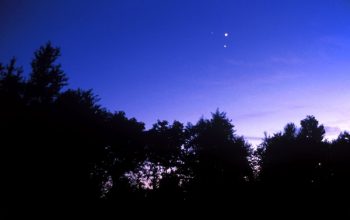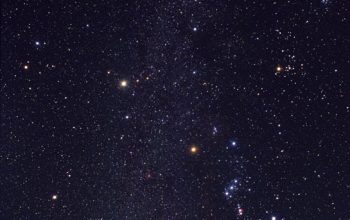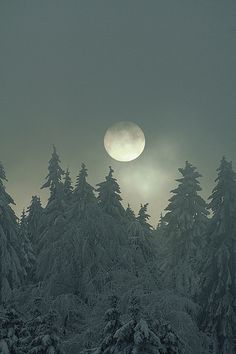Monday, August 22nd:
Jupiter and Venus continue their close dance in the sky. After sunset they rise 6˚ apart due west. Venus is the the right of Jupiter. We can’t forget about Mercury, positioned 4˚ to Jupiter’s lower left. The Moon is 83% visible as a waning gibbous, with moonrise at 10:28 p.m. and moonset at 12:05 p.m. the following day.
Tuesday, August 23rd:
A 3-dotted vertical line streaks across southern sky. Saturn, Mars, and Antares line up in order from left to right at twilight. The Moon is 74% visible as a waning gibbous, with moonrise at 11:08 p.m. and moonset at 1:13 p.m. the following day.
Wednesday, August 24th:
This is the last night of the trio line-up of Saturn, Mars, and Antares. Aldebaran creeps closer to the left of the Moon. The Moon is at its last quarter, with moonrise at 11:52 p.m. and moonset at 2:19 p.m. the following day.
Thursday, August 25th:
Time for some daytime observing! The Moon occults Aldebaran for viewers in the central and western United States during midday. With a telescope and clear skies, you should be able to witness the star disappear behind the bright face of the Moon only to reappear from the dark face. Check online for approximate local times of this astronomical event. The Moon is 52% visible as a waning crescent moon, with moonset at 2:19 p.m. and moonrise at 12:40 a.m. the morning of the 26th.
Friday, August 26th:
On this eve of Venus and Jupiter’s conjunction, they appear only 1˚ apart in the low western sky after sunset. The Moon is 40% visible as a waning crescent moon, with moonrise at 12:40 a.m. and moonset at 3:20 p.m.
Saturday, August 27th:
Witness the conjunction of Venus and Jupiter! Around 20 minutes after sunset, the two planet will appear only 0.1˚ apart, so close that even binoculars may not discern that the light source originates from two different planets. The Moon is 30% visible as a waning crescent moon, with moonrise at 1:33 a.m. and moonset at 4:17 p.m.
August is also a wonderful time to view the Milky Way galaxy stretching from Sagittarius to Cassiopeia and Perseus.
If you capture any images of this week’s sky, email us at astronoteen@gmail.com for a chance to be featured on the Image of the Day page.
*NOTE: Times for moonrise and moonset were calculated based on a New England location. Click here to receive accurate times for your area.
Keep looking up,
Julia
Published by Julia Mariani
Sources: timeanddate.com, calender-365.com, Sky and Telescope


